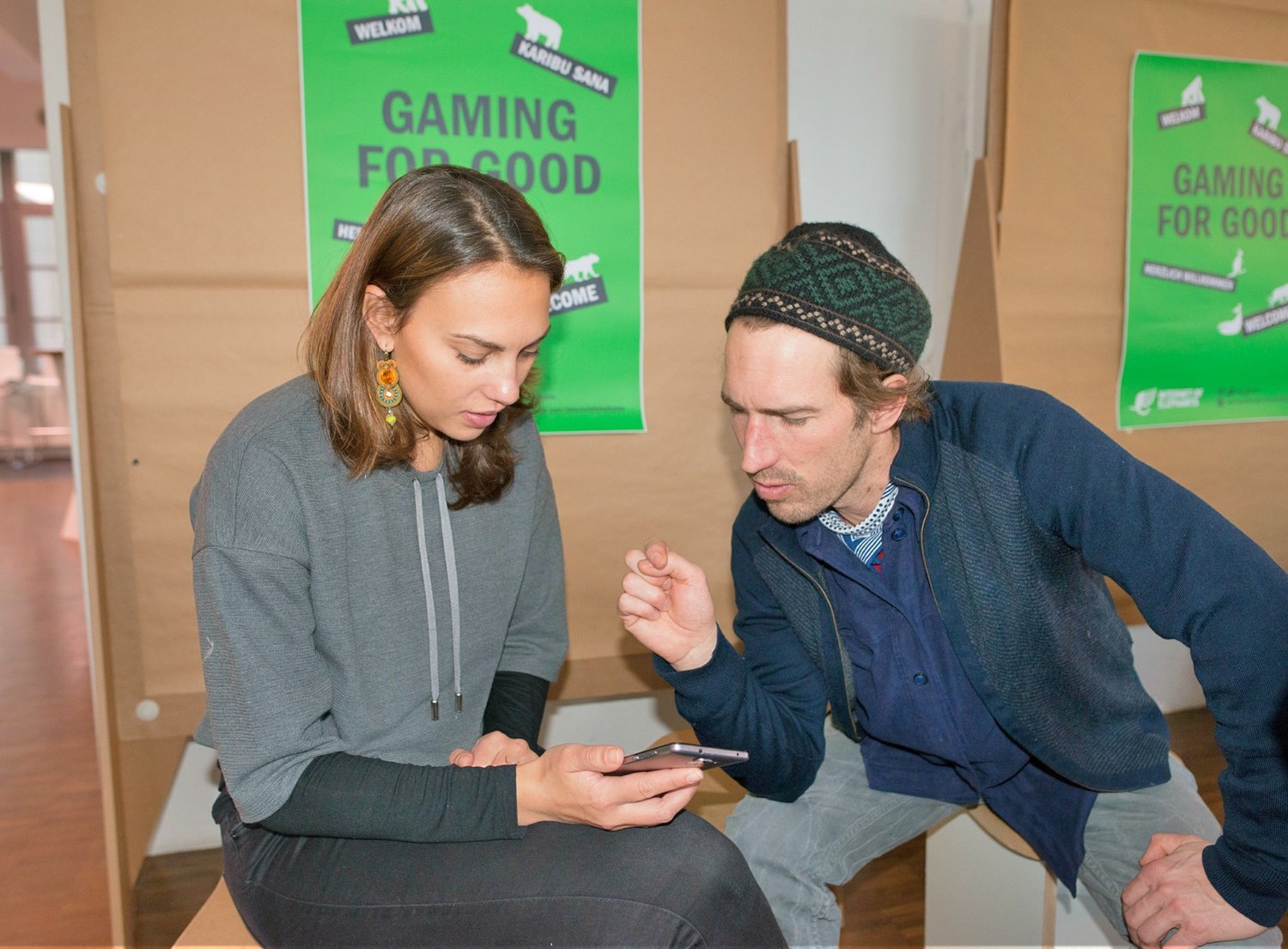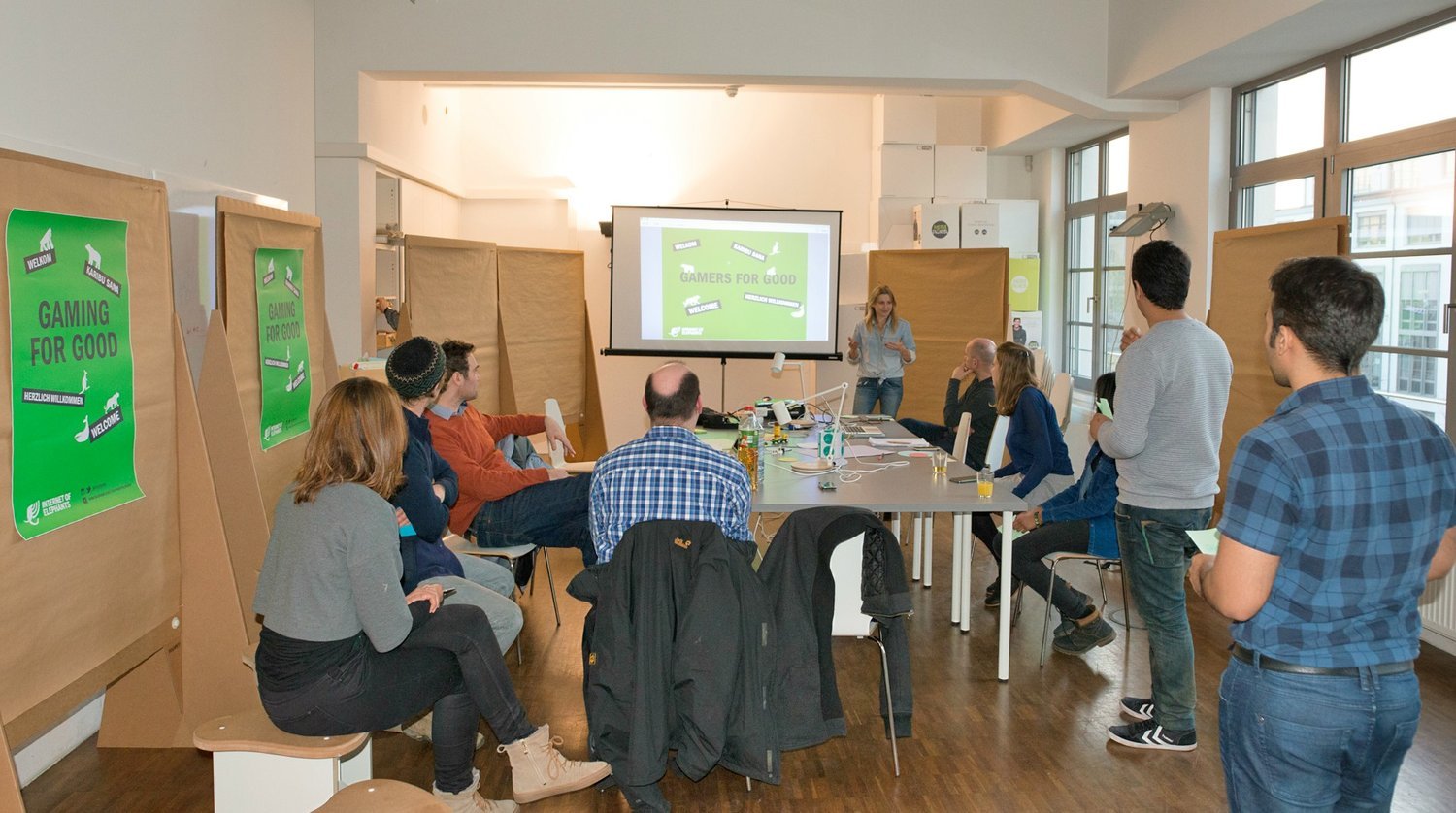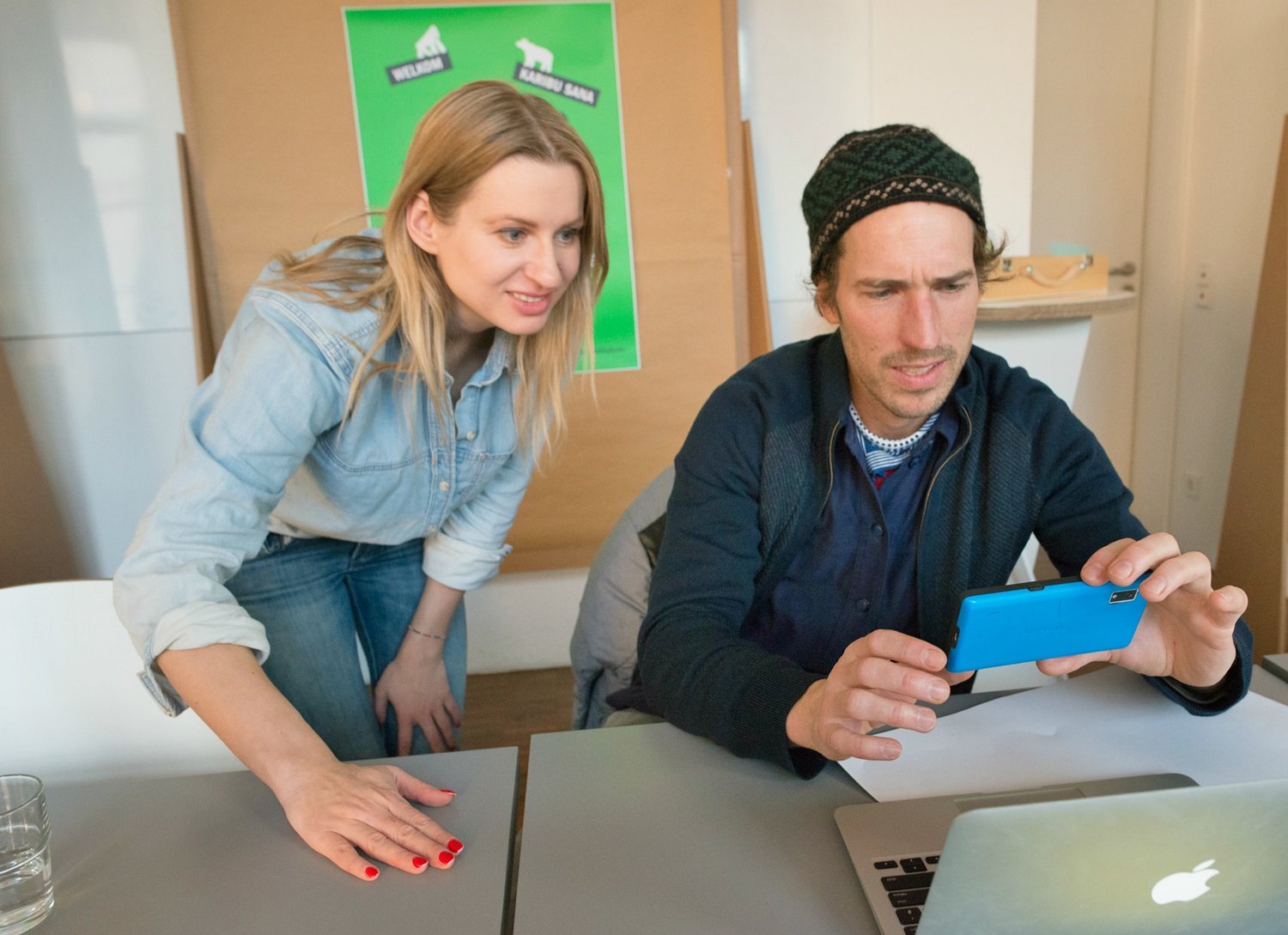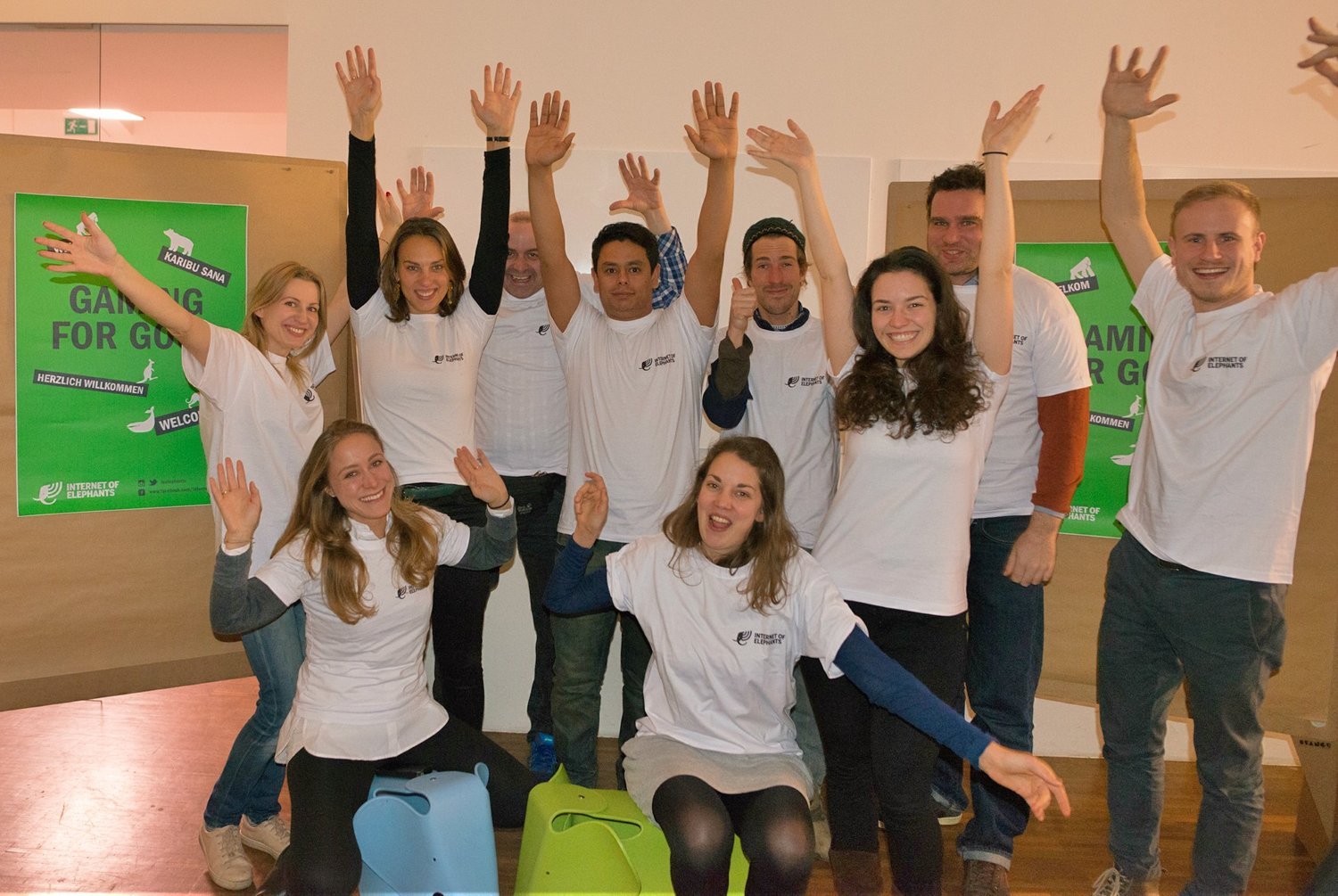Five Insights from our Game Test event in Frankfurt, Germany
We received the support of the Frankfurt Zoological Society and the Senckenberg Museum in Frankfurt to host a Gamers 4 Good event and play our second prototype with our testers in person on February 26, 2017 in Frankfurt, Germany.
When we launched our first game prototype, more than 1.000 people signed up to play. Testers told us they wanted more information about Amelie, her environment and her herd. And most of the testers wanted an app. So for the second prototype we included more stories and developed an app for your phone or tablet.
The second prototype of upcoming game
You know you got a good thing going when you see someone’s face light up when we explain the game and its story. Such was the case when we invited gamers, wildlife enthusiasts, conservationists and social entrepreneurs to a venue called Social Impact Lab in Frankfurt to bounce around ideas about our second prototype.
Here are the 5 main insights we took away from the test event:
1. TEST HOW WE EXPLAIN OUR IMPACT
It’s important to test if people enjoy the game, but it is also important to test how to best communicate our impact model. Players more than anything wanted to see their direct impact on Amelie’s environment. Our upcoming game will benefit wildlife by channeling funds from in-app purchases back to conservation. We learned that it is super important to involve players early on in this mission and find out how they want to see the difference they are making presented to them.
2. SATISFY BOUNDLESS CURIOSITY
Players felt especially encouraged when they learned that the wildlife data we are working with is real. But they still missed more graphics and images that enable them to understand the environment better.
3. CREATE A MORE DYNAMIC, ENGAGING CONTEXT
Players liked the improvements we made in predicting where Amelie is going. But in order for them to stay engaged, they wanted a more dynamic map. One way to improve the connection between the player and Amelie that was frequently suggested was to be able to see her facial expressions.
4. GAMERS DESIRE A ROLE IN THE GAME
Does the player represent a ranger? A wildlife photographer? Or a tourist going on a safari? Here’s the catch: we did not define this yet. But players told us they really wanted to know their role so we will investigate if and how we can incorporate that into our beta version.
5. ONE ELEPHANT IS NOT ENOUGH
Amelie is not enough for our testers, it seems. Players liked interacting with her but wanted more animals in the long run. We hear you!
And last but not least: We are glad we did not shy away from sharing our ideas and concepts early. Because most of all, we learned it's exactly this sharing that makes the product better. You will not know what players want until you ask, so the earlier you get it the better!
A very big thank you goes out to Social Impact Lab Frankfurt for hosting the game test event and thanks to Thomas Lehmann from Senckenberg Museum as well as Katharina Hensen and the conservation experts from Frankfurt Zoological Society for supporting the test rounds with great input and feedback. We could not have done this without your support.




